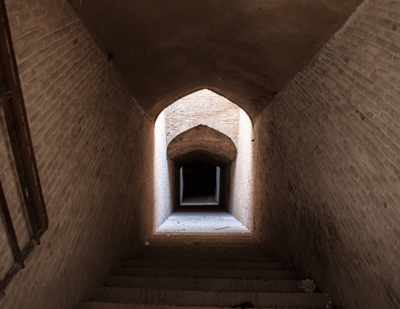The Story of The Jewish Baths of Ortigia
/ in visit sicily, Best of sicily tour, Ortigia, Sicily / by smadar PalaceHave you ever discovered something, completely by chance, that turned out to be a real treasure? So it was with the discovery, a mere 34 years ago, of the Jewish Baths beneath a narrow street on the Sicilian isle of Ortigia. Here we tell you the amazing story of this incredible discovery and the history behind the Jewish Baths of Ortigia.
An Amazing Discovery
Deep in the historical center of the city of Syracuse in Sicily, along a narrow cobblestone street, there is a tiny museum connected to a hotel where you can find out about the Jewish Baths of Ortigia. But their presence here has only recently been confirmed. In the late 1980s, in an abandoned and run down part of the historical city center, a resident decided to restore an old home she’d recently purchased. The home had, during medieval times, been the palazzo of the Bianchi's, a Jewish family of Ortigia.
The dilapidated home was in various stages of disrepair and had become a place for vandals to dump their trash and leave their rudimentary graffiti on the walls. Inside the home was a courtyard that led to a building that held a vault filled with tons and tons of dirt. When the dirt was finally removed a staircase was uncovered. At the bottom of the staircase was an even more remarkable discovery; the largest and oldest Jewish Baths in Europe.
The History of Judaism in Ortigia
The Baths date back to around the 6th century BC. Also known as “mikveh” the baths lie 30 feet below the ground where the hotel and museum now stand. The neighborhood was once home to the Jewish residents of Ortigia and was known as “Giudecca”.
While the area of Siracusa in Sicily is known as home for millennia to the Greeks, Romans and those of Christian affiliation, the Jewish residents of the island have also been around for more than 2000 years. Although the first real records of Jewish inhabitants of the island go back to 70 AD, when the Romans destroyed Jerusalem and brought its former residents to Sicily as slaves, there is some evidence, due to Sicily’s convenient trade route, Jewish merchants and traders likely settled there before the slaves came.
Preserving The Sacred
At the time of the Inquisition the Jewish residents of Ortigia made up 25% of the town’s population. With the onset of the Inquisition the Jewish people were forced to convert to Catholicism or face execution. As many Jews fled into exile they attempted to preserve the holy places they were leaving behind. After all, these were sacred to their religion, and as such, deserved to be preserved with respect. And they needed to shield the Baths from destruction. The mikveh was filled with dirt and rubble and the entrance was sealed. Until 1989, that is.
Step into History
This mikveh dates back to the 6th century BC but was determined to have been in continuous use until the 15th century AD when the faithful were forced to flee. The Jewish religious rituals associated with the use of a mikveh involve total immersion in what is called “living waters''. Those living waters are made up of water that flows naturally. Beneath Ortigia is a freshwater spring, making it the ideal location for this sacred place. Originally the islet of Ortigia was home to three mikveh. This mikveh remains and was likely built into an existing cistern, possibly put in place by the Byzantines.
A 48-step steep stone staircase, carved from the bedrock which surrounds it, descends into a square room with a vaulted ceiling. The ceiling is held in place by stone pillars, also carved from bedrock. There is a ventilation shaft that allows some light to enter the mikveh but during the time it was used oil lamps lit the way.
Stone benches surround the three central baths where guests could wait their turn. Around the corner from the main baths are two smaller rooms which offered a more private experience. These secluded quarters contained the private baths which were used by the wealthier patrons or the rabbis and their wives.
The purpose of the Jewish Baths was for purification. Those who took part in the ritual were likely couples preparing for marriage, women who’d recently given birth or women who had completed their monthly menstruation. The mikveh was also used during the ceremony celebrating an individual’s conversion to Judaism.
Experience the History and Hospitality of Ortigia
The discovery of the Jewish Baths of Ortigia and the establishment of the museum offer a glimpse into a fascinating historical period in Siracusa. The remarkable story has breathed new life into a formerly unpopular area. Today this city center is alive with shops and restaurants. The colorful market, the renowned street food and the passionate residents of the area attract visitors from all over the world. And through it all runs a deep and flowing appreciation of the history of the Jewish Baths of Ortigia.
The Best of Sicily tour includes a 3 nights stay in beautiful Ortigia, which gives you some free time to explore on your own.
Share this article
-
Share on Facebook
Share on Facebook
-
Share on Twitter
Share on Twitter
-
Share on WhatsApp
Share on WhatsApp
-
Share on Pinterest
Share on Pinterest
-
Share on LinkedIn
Share on LinkedIn
-
Share on Tumblr
Share on Tumblr
-
Share on Vk
Share on Vk
-
Share on Reddit
Share on Reddit
-
Share by Mail
Share by Mail



